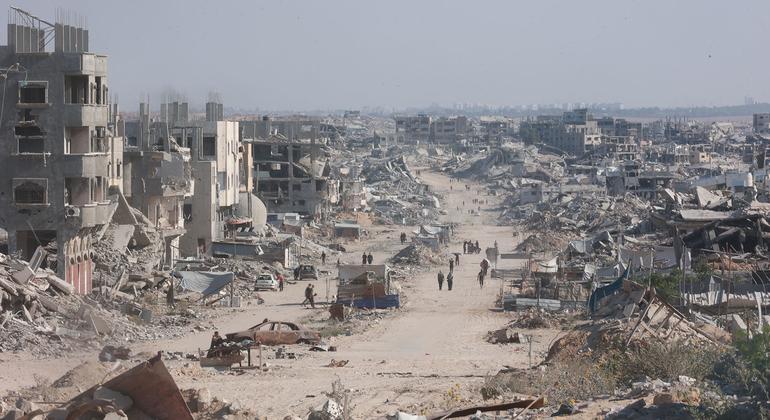Nearly 500 million hectares (ha), the equivalent of around 750 million football fields, have been lost since 1990.
However, deforestation has slowed in all regions of the world over the past decade, according to the Food and Agriculture Organization of the United Nations (FAO).
Deforestation refers to the loss of forest or its conversion to other uses, such as urban use or wastelands.
Every year for ten years, the planet has lost around 10.9 million hectares. of forest. This rate represents an improvement compared to the 13.6 million hectares lost each year during the previous period and the 17.6 million before that.
Who monitors the forests?
This encouraging trend was revealed Tuesday in the latest FAO forest assessment. reportwhich is published every five years.
It provides comprehensive analysis of global and regional forest trends using data collected through remote sensing – an advanced process using imagery and satellites – and national reports.
Thanks to international agreements focused on combating climate change, such as Paris Agreementthe UN promotes a collective approach to environmental protection.
Assessments such as the FAO Forests Report check whether countries are on track with the UN treaties and frameworks they have signed up to.
Qu Dongyu, director general of the agency, said the data produced by these assessments serves many purposes “from informing the global community about the state of forests and their changes, to supporting decisions, policies and investments related to forests and the ecosystem services they provide.”
How are forests preserved?
A fifth of the world’s forests are in legally established protected areas. 251 million ha of additional protected forest since 1990 – according to the evaluation. Asia has the highest share among all regions, with 26 percent forest covered.
Beyond protection orders, more than half of all forests are managed. This means that land is used either to produce wood, fiber and bioenergy, for soil and water protection and biodiversity conservation, or for tourism, among other uses. In Europe, 94 percent of forests are managed.
If forests are managed, who owns them? Since 2020, 71 percent of the world’s forests are state-owned. In North and Central America, indigenous peoples and local communities owned 41.6 million hectares of forest.
Fires, insects, diseases
Last year, the FAO related the increasing risk of wildfires and pests linked to climate change.
Fires remain a widespread threat, affecting an average of 261 million hectares of land each year, almost half of which is forested.
In 2020, an additional 41 million hectares of forest were damaged by insects, diseases and severe weather.
Contributing to forest monitoring and protection efforts, a Forest lodge will promote biodiversity conservation and sustainable development at the upcoming UN COP30 climate conference next month in Brazil.
Originally published at Almouwatin.com








